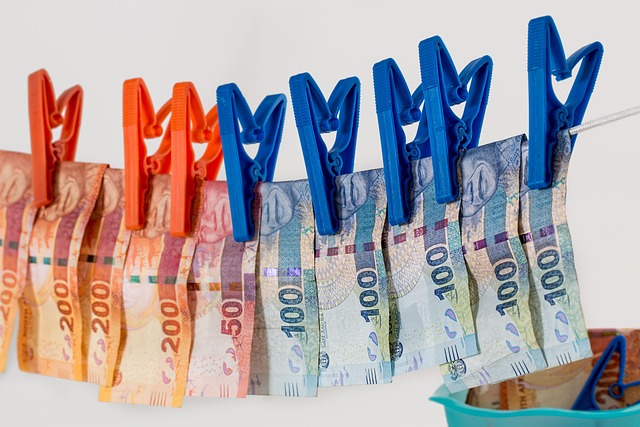International trade moves trillions of dollars’ worth of goods every year and is the lifeblood of global commerce. Unfortunately, the very systems that make trade efficient — complex supply chains, cross-border payments, and layers of documentation — also create opportunities for criminals to disguise illicit money flows. Trade-based money laundering (TBML) has emerged as one of the most sophisticated methods for cleaning dirty funds. For compliance officers, it is no longer a niche threat but a central challenge.
This article explores TBML in depth: how it works, the warning signs, and the steps financial institutions and companies can take to protect themselves.
Understanding Trade-Based Money Laundering
Money laundering is traditionally explained as a three-stage process: placement (introducing illicit funds into the financial system), layering (moving money around to obscure its origin), and integration (making it appear legitimate). TBML primarily occurs during the layering and integration stages.
Instead of relying on obvious cash deposits or wire transfers, criminals exploit legitimate trade transactions to transfer value. They might ship actual goods, inflate or deflate invoices, or even pretend shipments occurred when nothing moved. Because trade involves multiple parties — exporters, importers, freight forwarders, customs brokers, shipping lines, and banks — detecting foul play is far more difficult than spotting a suspicious cash transaction.
The Financial Action Task Force (FATF) has highlighted TBML as a major global risk. Unlike classic laundering methods, TBML piggybacks on legitimate economic activity, making it harder for authorities to distinguish criminal funds from normal commerce.
Why TBML Is Growing
Several powerful trends have made TBML increasingly attractive:
Globalized supply chains
Modern products can cross a dozen borders before reaching the end customer, with each added jurisdiction creating oversight gaps.
Complex trade finance instruments
Letters of credit, forfaiting, and open-account transactions require extensive documentation. Criminals exploit the paperwork itself — altering invoices, forging bills of lading, or presenting the same documents to multiple banks.
Regulatory arbitrage
Trade often passes through free-trade zones and ports where customs inspections are lighter or AML controls weaker. Criminals deliberately route goods through these “soft spots.”
Rapid digitalization
Electronic bills of lading and digital payment systems speed up commerce, but if authentication is weak, forged e-documents can circulate in seconds.
High-value, easily transported goods
Gold, gemstones, luxury cars, and electronics are small, valuable, and liquid — ideal vehicles for shifting illicit value.
Together, these factors let criminals move hundreds of millions of dollars with less chance of detection than a single suspicious bank transfer.
Common TBML Techniques and Red Flags
Although every scheme differs, criminals rely on recurring tactics. Recognizing these helps compliance teams act early.
Over-invoicing
Exporters deliberately inflate the price of goods or services so the buyer pays more than the market rate, allowing illicit funds to exit the buyer’s country. Red flag: unit prices far above market norms without a clear economic reason.
Under-invoicing
Goods are declared at below-market prices so the importer effectively receives extra value. Red flag: prices significantly lower than industry benchmarks, especially where duties or tariffs would normally encourage higher declared values.
Multiple invoicing
A single shipment is invoiced several times to different banks, each providing financing. Red flag: duplicate bills of lading or invoices submitted to more than one financial institution.
Phantom shipments
No goods move at all; fraudulent documents — commercial invoices, bills of lading, inspection certificates — create the illusion of trade. Red flag: shipping records that cannot be verified with port authorities or carriers.
Misrepresentation of goods
Items are deliberately mislabeled — scrap metal declared as copper cathodes, costume jewelry labeled as diamonds. Red flag: commodity descriptions inconsistent with the shipper’s normal business or trade route.
Unusual payment flows
Payments routed through unrelated third parties, excessive use of cash, or sudden changes in payment instructions. Red flag: last-minute requests to pay an offshore entity with no commercial rationale.
Complex corporate structures
Layers of shell companies in secrecy jurisdictions obscure the beneficial owners. Red flag: difficulty obtaining ownership information or frequent changes in directors.
Inconsistent trade patterns
Abrupt spikes in volume, sudden switches to unrelated commodities, or routing through high-risk countries. Red flag: a small firm suddenly importing high-value goods outside its normal product line.
Spotting these issues often requires comparing invoices, market prices, shipping data, and customer profiles — sometimes across multiple countries and languages.
The Compliance Officer’s Mandate
For banks, freight forwarders, and trading houses, the compliance function is the first and sometimes only line of defense. An effective TBML program rests on several pillars:
Tailored risk assessment
Map out your institution’s specific trade exposures — products, corridors, counterparties, and financing instruments — and identify the biggest vulnerabilities.
Enhanced due diligence (EDD)
Go beyond basic Know Your Customer checks. Examine ownership structures, supply-chain partners, and the legitimacy of trade documents. Verify bills of lading with shipping lines and compare invoice values to independent market data.
Transaction monitoring
Develop systems that cross-reference trade documentation with payment data. Automated tools can flag pricing anomalies or mismatches between invoices and shipping manifests, while analytics and machine-learning models detect patterns a human might miss.
Timely reporting
If suspicious indicators cannot be resolved, file a Suspicious Transaction or Activity Report (STR/SAR) promptly. Provide a clear narrative: what triggered the suspicion, what evidence supports it, and any steps already taken.
Staff training
Everyone touching trade finance — relationship managers, operations clerks, document checkers — must understand TBML red flags. Criminals rely on staff complacency; training is the first shield.
Staying current
TBML typologies evolve. Follow guidance from FATF, FinCEN advisories, and local regulators. Attend industry forums and share intelligence.
Collaboration and Information Sharing
Because TBML is international by nature, no single entity can fight it alone.
Public-private partnerships
Many countries host AML forums where banks, customs agencies, and financial-intelligence units share insights. Participation gives institutions early warnings about emerging schemes.
Cross-border cooperation
Work with correspondent banks and foreign regulators so that when one port detects suspicious trade, that intelligence travels quickly to others.
Industry standards and technology
Support digital verification of bills of lading and standardized electronic data interchange to reduce opportunities for forged documents. When conducted responsibly and within privacy laws, information sharing multiplies the impact of each participant’s efforts.
Practical Steps for Companies
Even organizations that are not banks need a plan. Exporters, importers, and logistics providers can reduce their exposure with a few key measures.
Map trade flows
Maintain a current map of every country, route, and payment channel your goods and funds pass through. Highlight high-risk jurisdictions and track both physical shipments and financial movements so unusual transactions stand out quickly.
Know your partners
Screen not just customers but also brokers, freight agents, and third-party payers. Verify ultimate beneficial owners, refresh checks regularly, and include AML clauses in contracts to ensure partners meet your standards.
Use technology wisely
Apply price-benchmarking and automated document checks to catch anomalies in real time. Integrated data platforms and predictive analytics reveal suspicious routes or payments while analysts review alerts for accuracy.
Regular audits
Conduct internal reviews and surprise spot checks to test controls, and invite independent auditors for a fresh perspective. Document findings and track corrective actions to keep defenses strong.
Clear escalation paths
Provide staff with written procedures, designated contacts, and protected channels for reporting concerns. Train teams so they can escalate suspicious activity quickly and confidently.
These steps are not merely regulatory box-checking — they protect the company’s reputation and its ability to operate in global markets.
Looking Ahead
As global commerce evolves, so will TBML. The rise of e-commerce platforms, faster cross-border payment systems, and digital trade documents brings efficiency — and risk. Criminals are quick to exploit gaps between technological innovation and regulatory oversight.
Compliance officers should expect increased regulatory attention. Many jurisdictions are tightening trade-data reporting requirements and encouraging the use of centralized databases for bills of lading and customs records. Institutions that invest early in robust TBML controls will be better positioned to adapt.
Final Thoughts
Trade-based money laundering thrives on complexity and international loopholes. For criminals, it is a way to convert illicit proceeds into seemingly legitimate business transactions. For compliance officers, it is a moving target that demands constant vigilance.
A strong, trade-specific AML program; informed and well-trained staff; and collaboration with regulators and industry peers remain the best defense. By understanding the mechanics of TBML and acting decisively, compliance professionals can help safeguard the integrity of global trade and the financial system as a whole.


